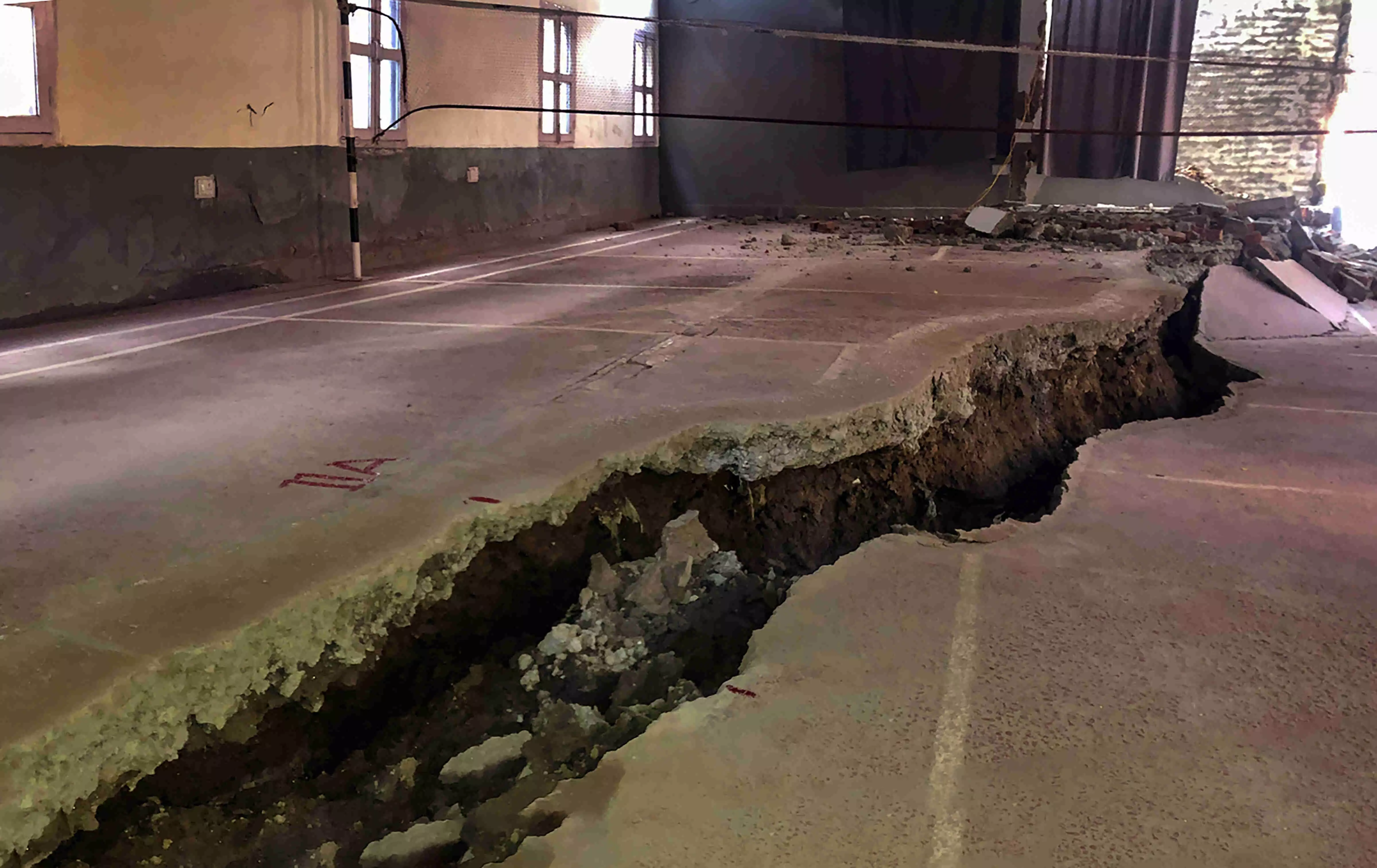'Culminated' crisis

Over the years, the subsidence-induced cracks in Joshimath have gotten wider and longer. The town is now declared as a land-subsidence zone. Joshimath is not new to the phenomenon of subsidence. Infrastructures — ranging from houses to roads and others — in the hill town have been witnessing the development of cracks for years. It is only that the intensity of the problem has increased significantly this time around. It is true that subsidence, or vertical movement of land, is a natural phenomenon and there is little we humans can control about it. However, none can deny the fact that anthropogenic factors have also played a leading role in the deterioration of the situation in the state in general, and the region in particular. In the first place, the town as a whole is reported to have been built on the remains of landslides — lending it a loose and shaky foundation. Secondly, despite being located in a sensitive Himalayan region, the town has been subjected to heavy infrastructure build-up and population footfall over the years. Thirdly, it appears that the regular development of cracks was not a strong enough signal for the state administration to be on high alert. Against the backdrop of this lackadaisical approach, the disaster in Joshimath, it seems, was just waiting to unfold. The banging of frequent and intensified natural calamities in the hill state appears to be falling on deaf ears. It’s embarrassing to see that even death and destruction have not moved the human sentiment to aspire for a safer world. Following the Joshimath incident, a plea has been filed in the Delhi High Court to look into the nitty-gritty of the matter. The plea has raised important questions about the sustainability of development projects in the region. It pointed out that the Ministry of Power had invested Rs 2,976 crore in 2013 to initiate the construction of the Tapovan Vishnugad power plant. The project has come under heavy criticism, and experts have cited it as one of the reasons behind the Joshimath incident. In addition to this, the plea also cited that the Ministry of Road Transport and Highways has invested Rs 12,000 crore in the programme for connectivity improvement for Char-Dham in the state. It may be noted that Joshimath experiences heavy footfall as it is a gateway to several pilgrimage sites including Badrinath and Hemkund Sahib. The state government indeed needs to make a prospective contemplation around these developments. It is high time to realise that developmental aspirations can no longer be granted unchallenged priority over ecological concerns. Also, no longer should phenomena like the one in Joshimath should be brushed aside as mere wrath of nature. A comprehensive legal framework and administrative protocols need to be set in place to fix human accountability for such disasters. It’ll be a complex task but a start has to be made at some point in time. Appropriate scientific measures and technology need to be roped in to reduce the impact of climatic disasters in the long term. Of course, the leading priority at this juncture should be to reconstruct the damaged properties. However, the priority currently should be to safeguard as many people as possible. The state government appears to be doing whatever it is capable of. Evacuation drives are in place. Topmost officials of the state are visiting families in person and asking them to relocate from ‘unsafe’ and ‘uninhabitable’ houses. The state government is also learnt to have promised Rs 4,000 per month for those who want to move to rented accommodations, for a period of up to six months. As of now, out of the total 4,500 buildings in Joshimath, more than 600 are reported to have developed huge cracks, making them uninhabitable. Temporary relief centres are being recognised continuously to evacuate people. The Central government, too, has assured all possible help. These are reactionary steps at best and customarily followed in case of each natural disaster. These reactions are necessary to avert the loss of lives and minimise the impact of physical destruction but these are not all that a particular government is expected to do. It is high time that the Uttarakhand government realigns its development agenda with continuous ecological management.



